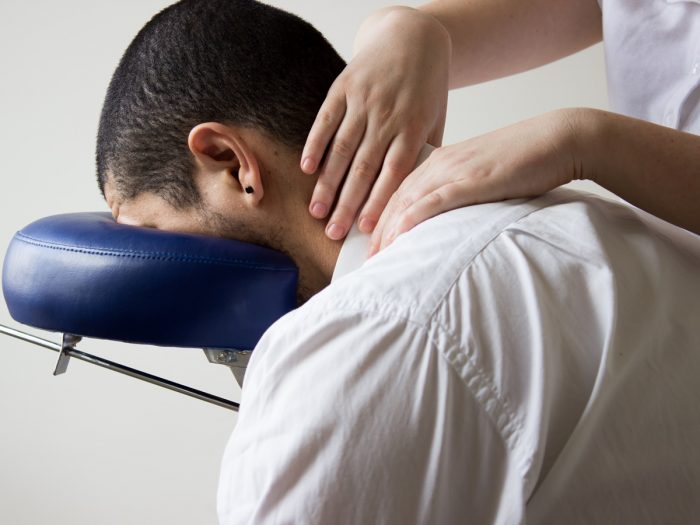Shiatsu massage is a traditional form of massage that involves the application of pressure on particular pressure points for extended periods of time. This helps to promote energy flow, reduce stress, ease muscle tension, and boost blood flow.
What is Shiatsu Massage?
Originating in Japan, with some techniques rooted in Chinese traditional medicine, shiatsu massage involves a practitioner applying pressure to key points on the body in a continuous pattern. The word shiatsu means “finger pressure”, which is precisely what happens during such a massage. The therapist will press their fingers, palms, elbows or feet into pressure points around the body, depending on where each individual’s problems are found. The therapist often holds the pressure for 2-8 seconds before moving onto the next pressure point. This therapy is grounded in the idea of affecting pressure points that lie on certain “meridians” in the body, which can be aligned or relaxed to allow healing energy (“chi”) to flow.
While there is a dearth of formal research on the claims surrounding shiatsu massage, and many other traditional forms of medicine, there are centuries of anecdotal evidence and positive reports from around the world for the same. It is believed that the positive effects of this massage style come from its effect on the sympathetic nervous system, which can generate a number of benefits.

Man getting a shiatsu massage Photo Credit: Shutterstock
Benefits
The primary benefits derived from shiatsu massage include treating chronic pain, increasing energy levels, promoting healthy digestion, speeding recovery from injuries and sleep issues, among others.
- Energy Levels: The foundation of shiatsu massage is opening up blocked energy pathways in the body, so improving energy levels and reducing fatigue has long been a claimed benefit of this massage style. [1]
- Chronic Muscle Pain: It is known that shiatsu massage can help relieve chronic muscle pain by increasing flexibility, decreasing cortisol levels, and allowing your muscles to relax. This approach is also useful for arthritis pain and lower back pain, as evidenced in this review of shiatsu efficacy. [2]
- Digestion: It is believed that shiatsu massage can help with constipation and bowel issues, and also stimulate the digestive process. [3]
- Injury Recovery: Boosting blood flow and lowering stress hormone levels in the body can speed the process of recovery following an injury.
- Pregnancy: Pregnant women and those who are menstruating have been using shiatsu massage for centuries. It is believed to reduce the severity of menstrual cramps and the pain of labor when practiced effectively. [4]
- Cancer Treatment: Cancer treatment can have a wide range of side effects, including debilitating pain, a lack of appetite, and depression. This massage style is believed to improve many of those symptoms, as shown in this study published in the Kitakanto Medical Journal. [5]
- Migraines: Shiatsu massage on particular pressure points of the neck and shoulders can reduce nervous activity and tension in the head, helping to relieve severe migraine headaches. [6]
- Sleep: Anecdotal evidence supports the use of shiatsu massage for restless leg syndrome and insomnia, as well as sleep issues in cardiac unit patients, as it can help to lower stress levels and heart rate. [7]
- Stress Relief: Like many other massage therapy styles, shiatsu has been shown to affect the sympathetic nervous system. It can reduce cortisol levels in the body, thus reducing overall stress and anxiety, as found in this study from Complementary Therapies in Neurology. [8]
Preparation
Before going into a shiatsu massage, there are a few things to consider.
- It is always best to speak with your doctor before having a massage, to ensure that it is a good choice based on your individual health needs. A good practitioner will discuss your health issues/concerns and perform a brief examination before beginning the massage.
- It is best not to eat or drink in the two hours prior to the massage, as it may be uncomfortable to lie on your stomach or be digesting while trying to relax.
- Additionally, oils are not traditionally used in shiatsu massage, so you remain fully clothed, but wear loose-fitting and comfortable clothing.
Caution
As with any form of massage therapy, there are some potential side effects of this massage style. Though it is generally considered safe, those with platelet disorders or weakened bones (osteoporosis) should be cautious and tell their massage therapists so they can adjust their pressure accordingly. You may experience some muscle stiffness or soreness in the hours or days following the massage, but they should fade rather quickly, more rapidly than the effects of a traditional massage. Generally speaking, you should discuss any and all health conditions with the massage therapist before the massage begins, so they can have an accurate picture of your health and wellness! [9]
